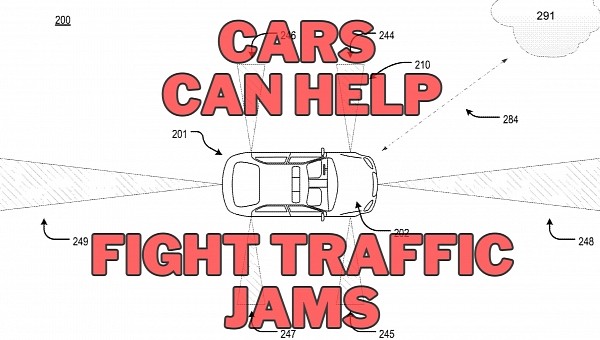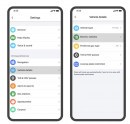Waze is perhaps an essential part of the app arsenal of millions of modern drivers, particularly thanks to accurate traffic information. But a new system described in a recent patent pushes the accuracy of traffic conditions to a completely new level.
In essence, the inventor of a so-called “real-time traffic control system and method” explains how all vehicles on the road could transmit information on what’s happening on the road.
This means that instead of traffic reports submitted by users and aggregate data collected by an app, each vehicle would play the role of a transmitter.
Drivers wouldn’t have to move a second finger. The onboard sensors and camera would take place of everything, as traffic-related information would be automatically collected and transmitted to a central server.
When the system receives sensor data, it can process the information to determine traffic conditions. Based on sensor readings, the server should be able to calculate the average speed of the cars on each section of the road, the traffic density, and the exact location of traffic jams.
The data can be transmitted by pretty much every sensor installed on a vehicle. For example, the LiDAR sensors can collect information on the distance to each car to help the server determine if you’re dealing with bumper-to-bumper traffic. At the same time, the vehicle can send information from the speedometer or onboard cameras.
In some cases, even the mobile device in the cabin can step in and help with additional details collected by its sensors.
The purpose of this technology isn’t just to monitor traffic conditions, but to also notify law enforcement when needed. For example, if traffic jams cause major delays, eventually leading to major congestion, authorities can be alerted. The whole thing can happen in real-time, with traffic police being notified even when they are already on the road.
More advanced implementations could be created as well, especially as the server can generate statistics and other information to improve traffic flow. Whether or not this information would return to users in the form of a mobile app is something that comes down to authorities, though.
Waze shows all traffic information within the app, so drivers would know in advance where they are likely to occur. The patented technology puts all the data in the hands of law enforcement, albeit there’s no doubt a dedicated application to show traffic information would push the concept pioneered by Waze to a new level.
On the other hand, the concept is based on the idea that most cars on the roads are equipped with sensors capable of collecting and sending traffic information. This approach certainly isn’t feasible today, but in the long term, it could eventually gain more traction, especially as self-driving vehicles are taking over the automotive world.
This means that instead of traffic reports submitted by users and aggregate data collected by an app, each vehicle would play the role of a transmitter.
Drivers wouldn’t have to move a second finger. The onboard sensors and camera would take place of everything, as traffic-related information would be automatically collected and transmitted to a central server.
When the system receives sensor data, it can process the information to determine traffic conditions. Based on sensor readings, the server should be able to calculate the average speed of the cars on each section of the road, the traffic density, and the exact location of traffic jams.
The data can be transmitted by pretty much every sensor installed on a vehicle. For example, the LiDAR sensors can collect information on the distance to each car to help the server determine if you’re dealing with bumper-to-bumper traffic. At the same time, the vehicle can send information from the speedometer or onboard cameras.
In some cases, even the mobile device in the cabin can step in and help with additional details collected by its sensors.
The purpose of this technology isn’t just to monitor traffic conditions, but to also notify law enforcement when needed. For example, if traffic jams cause major delays, eventually leading to major congestion, authorities can be alerted. The whole thing can happen in real-time, with traffic police being notified even when they are already on the road.
More advanced implementations could be created as well, especially as the server can generate statistics and other information to improve traffic flow. Whether or not this information would return to users in the form of a mobile app is something that comes down to authorities, though.
Waze shows all traffic information within the app, so drivers would know in advance where they are likely to occur. The patented technology puts all the data in the hands of law enforcement, albeit there’s no doubt a dedicated application to show traffic information would push the concept pioneered by Waze to a new level.
On the other hand, the concept is based on the idea that most cars on the roads are equipped with sensors capable of collecting and sending traffic information. This approach certainly isn’t feasible today, but in the long term, it could eventually gain more traction, especially as self-driving vehicles are taking over the automotive world.






